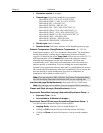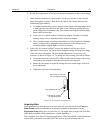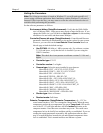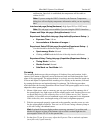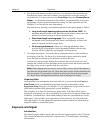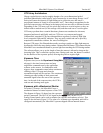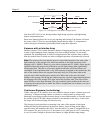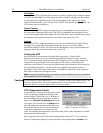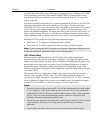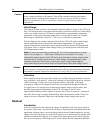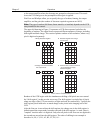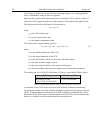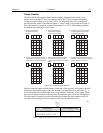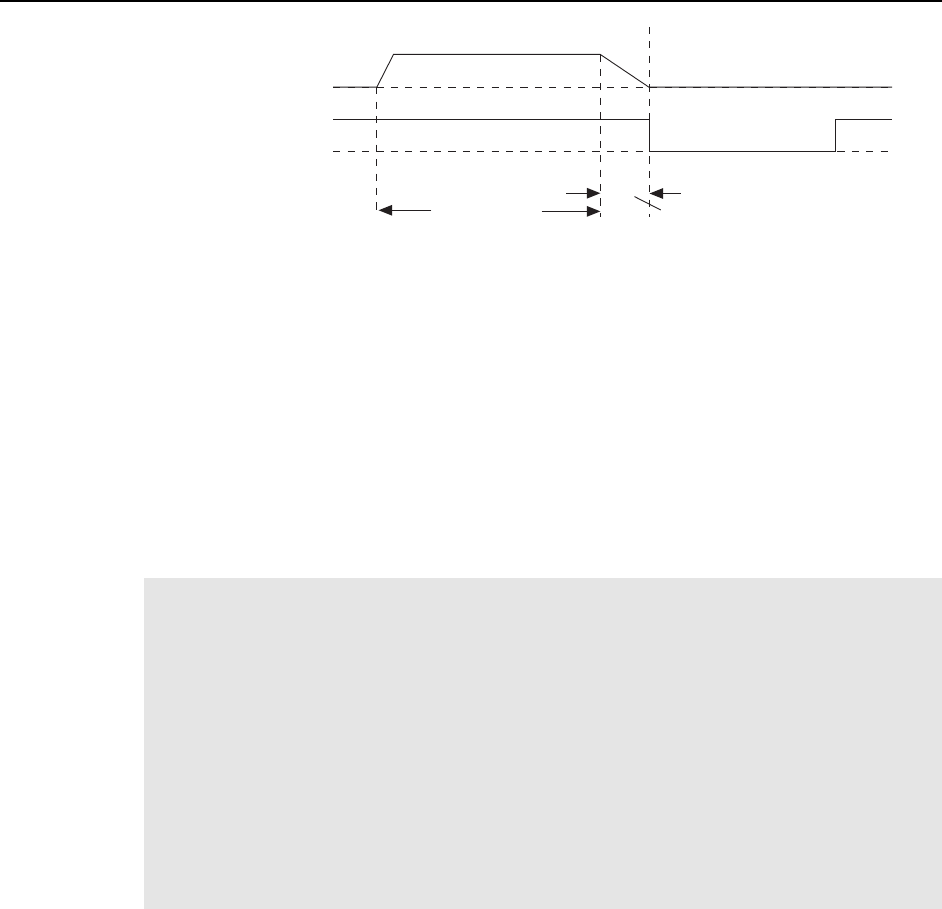
Chapter 5 Operation 57
NOT SCAN
Mechanical Shutter
Acquire Readout
ClosedOpen
Exposure time
Shutter compensation
t
exp
t
c
Figure 19. CCD Exposure with Shutter Compensation
Note that NOT SCAN is low during readout, high during exposure, and high during
shutter compensation time.
Since most shutters behave like an iris, the opening and closing of the shutter will cause
the center of the CCD to be exposed slightly
longer than the edges. It is important to
realize this physical limitation, particularly when using short exposures.
Exposure with an Interline Array
Interline transfer CCDs contain alternate columns of imaging and storage cells that work
in pairs. Light impinging on the imaging cells cause a charge buildup. As previously
explained, the operating mode is always overlapped unless the exposure time is shorter
than the readout time, in which case non-overlapped operation is automatically selected.
Note: The storage cells of an interline array are quite light-insensitive (the ratio of the
light sensitivity of the storage cells, which are masked, to the light sensitivity of the
imaging cells is ~4000:1). However, even with a rejection ratio of ~4000:1, there may be
situations where this may not be sufficient to prevent light leakage from significantly
affecting the data. That this is so becomes apparent when the on/off time factors are
considered. In an experiment with a very short exposure compared to the readout rate, the
ratio of the readout time to the exposure time may easily be of the same order as the
rejection ratio of the interline array storage cells. Where this is the case, the signal
buildup in the storage cells during the readout time may equal the signal transferred from
the imaging cells to the storage cells at the end of the exposure time. The effect of this
signal will be to cause data smearing. The only solutions to this problem at this time are
to increase the exposure time to where the effect is insignificant, use a shutter, or to use a
gated light source.
Continuous Exposure (no shuttering)
Unlike video rate CCD cameras, slow scan scientific cameras require a shutter to prevent
“smearing” of features during readout or transfer to a masked area or storage cells.
Smearing occurs during readout because charge is moved horizontally or vertically across
the surface of the CCD while charge continues to accumulate on the array. As the result,
the image will be blurred along one direction only.
The fraction of total signal due to smearing is the ratio of the amount of time spent
shifting divided by
the exposure time between frames. Faster shifting and/or longer
exposure times will minimize this effect. Note that while 1% smear is insignificant in an
8-bit camera (256 gray levels), in a 12-bit camera (over 4,000 gray levels) 1% smearing
is over 40 counts, enough to obscure faint features in a high dynamic range image.



